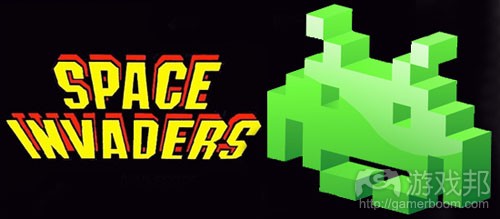解析日本游戏产业的规范和管制历史
作者:Kenji Ono
不只电子游戏,任何一种媒体形式都曾遭遇过社会的批评。电子游戏是一种随着技术而改变的娱乐形式,并且技术也将持续改变着。这便意味着电子游戏也会一直改变并遭遇各种批评。所以我们可以认为电子游戏的历史也是社会批评的历史:
技术革新创造了电子游戏平台。这一新平台创造了全新的业务模式。而全新业务模式也为电子游戏创造了新的游戏设计规则。游戏设计瞄准更加成熟的用户而作为有利可图的细分市场。最后成熟的游戏内容再次遭到社会的批评。随后又出现了新规则能够进一步定义什么是可行的内容什么又是不可行的。让我们从日本游戏产业的历史来深入分析这种情况。
1.20世纪80年代的街机
20世纪70年代,随着半导体的突破发展,一家名为TAITO的公司开始投入制造廉价且高性能的CPU。1978年,TAITO计划使用它去创造名为《太空入侵者》的游戏。这款游戏在日本造成了巨大的影响,但同时也创造了一些新社会问题。专门贸易盗版游戏的黑市作为日本瘪三或黑帮赚取利益的全新来源诞生了。老一辈人认为街机成为了滋生这种恶习的温床,整个社会都需要获得更多的控制。
1985年,《Entertainment Establishments Control Law》得到修正,即街机产业的控制将属于警察管辖权范围内,并受到法律的制约。直到那时,日本的街机产业才真正得以复苏,但是它所带来的结果也是利弊相合。虽然它向社会澄清了问题,但同时也给游戏产业染上了负面形象。除此之外,法律还非常保守,不能够快速做出社会改变。从《太空入侵者》在游戏产业中爆发以来的40年,街机用户已经从玩家变成了家庭成员和老人们了。有些街机甚至被当成是老人们休闲娱乐的社区中心。但是我们却很难让这些街机合法生存着。举个例子来说吧,尽管许多老人需要额外的身体支持,但是街机贩售员却被禁止与老顾客进行身体接触。不幸的是,这种情况似乎不可能推动法律的修正或将其从游戏产业中删除。
2.2000年代的主机
幸运的是,主机摆脱了20世纪80年代和90年代深深困扰着街机的社会管制。虽然日本经济在20世纪90年代面临了巨大的危机,但是那时候的游戏产业却相当活跃。它们以新规则会带给游戏产业负面经济影响而成功抵抗了这种束缚。而逼真视觉效果的技术创新则在游戏产业和社会间创造了一种新的摩擦。
2003年,CAPCOM在日本发行了《侠盗猎车手3》。一些当地政府将其标记为有害的内容。计算机娱乐评级组织(CERO)—-类似于ESRB,已经对这款游戏做出了评级,但是民众却表示这种评级远远不够。计算机娱乐供应商协会(CESA)对此非常重视,而游戏评级系统也变得更加严格。除此之外,CESA在有关价值和评级方面也变得更加透明。这是关于社会上自我调节的一种例子,即认为电子游戏产业的自我调节是值得怀疑的。因为产业和社会的影响,产业进入了一个完全相反的方向,而做到公平经营也变得更加困难了。
3.2010年代的手机/社交
在日本,无限通信与免费业务模式相结合创造了一个巨大的手机/社交游戏市场,并在2009年和2012年间快速扩展。现在,手机/社交市场已经扩展向主机游戏市场了。许多开发者接受了创造新游戏设计的挑战,有些则专注于提高每用户平均收益。另一方面,儿童游戏类型则创造了全新的摩擦。在2012年,日本政府认为一种名为“Complete Gacha(游戏邦注:鼓励玩家收集随机产生的虚拟卡片)的游戏是违背了社会原则,因为它与赌博是相关联的。社交游戏发行商便快速更新了他们的内容。此外,他们还创造了全新游戏产业协会,即日本社交游戏协会(JASGA)。它宣称将对社交游戏设计和运营实施新规则。
那时候,据说政府中出现了两派人。一派认为社交游戏产业是积极的,新规则将阻碍它们的发展。而另一派则认为社交游戏产业需要受到控制才能有效保护消费者的利益。过去的社交游戏产业执行的是自我调节,但是有些人却认为这远远不够。如今,整合CERO和JASGA的规则成为了游戏产业的新任务。
最近的游戏产业正面临全球化的改变,这便意味着游戏产业应该考虑平等的全球规则。我认为如果游戏产业想要进一步拓展市场,它就需要一些规则的约束。当然了,我认为自我调节比法律规则好得多,但是我也了解那是一项非常难的任务。另一方面,成熟或受到社会批评的内容将进一步向世界扩展,而这也会引起一些意想不到的问题。此外,随着技术的革新,游戏也将保持着变化。
如今的游戏产业需要专注于全新的自我调节系统,并且是透明且清楚地面向世界市场。显然这是一个很困难的任务,但我们也知道,这是我们对于社会和社区的职责。
(本文为游戏邦/gamerboom.com编译,拒绝任何不保留版权的转载,如需转载请联系:游戏邦)
A History of Control in Japanese Game Industry
by Kenji Ono
Every form of media has been criticized by society, not just videogames. But videogames are a form of entertainment that changes with technology, and technology continues to change. This means that videogames will continue to change and continue to be criticized. You can say that a history of videogames is a history of social criticism:
1.Technical innovation births the videogame platform. This new platform creates new business models. New business models create new game design imperatives for videogames. Game designs target more mature audiences as profitable market segments. The resulting mature game content is criticized by society. New regulations are created to further define what is and is not acceptable. Go back to step 1.
Let me explain it in more depth by way of the history of the Japanese game industry.
#1 Arcade in 1980s
A semiconductor breakthrough in the 1970s allowed a company called TAITO to manufacture cheap and high performance CPUs. TAITO would go on to create agame called “Space Invaders” with it in 1978. It made a huge impact in Japan, but it also created new social problems. A black market for pirated games formed as a new source of income for Japanese yakuza, or gangsters. Arcades were thought of as a hotbed of vice by old generation and society demanded more control.
In 1985, the Entertainment Establishments Control Law was updated and the arcade industry was ruled to be under police jurisdiction by law. The Japanese arcade industry has survived until today under the rule of law, for better and for worse. While it clarified issues for society, it also gave the game industry a bad image. In the addition, laws are very conservative and do not adjust quickly to social change. In the 40 years since Space Invaders rocked the industry, arcade guests have changed from gamers to families and old people. Some arcades are used as a kind of community center for older folks in a town. But it is difficult for these arcades to survive legally. For example, while many of the elderly need extra physical support, arcade clerks are banned from physical contact with their patrons. Unfortunately, there seems to be no moves toward updating the law or removing it from the game industry.
#2 Consoles in 2000s
Happily, consoles shook off the social regulation that plagued arcades in1980s and 1990s. The Japanese economy was crushed in the 1990s, yet the game industry was very active at the time. They defended against new regulation by saying that it might have a negative economic impact on the industry. But technological innovations in photorealistic visuals created new frictions between the game industry and society.
In 2003, GTA 3 was published by CAPCOM in Japan. It was labeled as harmful content by some local governments. The Computer Entertainment Rating Organization (CERO), a game rating system similar to the ESRB, had already rated the game,, but it was not enough according to public opinion. The Computer Entertainment Suppliers’ Association (CESA) took it seriously and the game rating system became more strict. In the addition, CESA became more transparent about their values and ratings. It is an example of self control in a society that views the videogame industry’s self control as dubious. The industry is pulled in opposite directions by industry and society, and fair operation is difficult.
#3 Mobile/Social in 2010s
Wireless communication and the Free-to-Play business model combined to create a large mobile/social game market in Japan, expanding quickly throughout 2009 to 2012. Now, the mobile/social market has expanded to the console gaming market. Many developers were challenged to create new game designs, some of which focused on increasing average revenue per user. On the other hand, the genre of kids’ games created new friction. In 2012, the Japanese government opined that a game called “Complete Gacha (lot)” was socially unacceptable due to gambling connections. Social game publishers quickly updated their content. In addition, they created new game industry association, the Japanese Social Game Association, or JASGA. It announced new regulations for social game design and operations.
At that time, there were said to be two groups in government. One group thought that the social game industry was very active and new regulation would slow their growth. The other group thought that the social game industry should be regulated to protect consumers. The social games industry has gotten by with self-regulation, but some don’t think it’s enough. Today, merging CERO and JASGA’s regulation has become a new mission for the game industry.
These days, the game industry faces globalization, meaning that the game industry should consider equally global regulations. I think that the game industry needs some regulation in order to continuously grow its market. Of course, I think self-regulation is much better than rule of law, but I understand that it is a very difficult task. On the other hand, mature or socially criticized game content can spread throughout the world and cause unexpected problems. In addition, games keep changing with technological innovations.
The games industry needs to focus on new self-regulatory systems and that are transparent and well-explained to the world. It is a difficult mission, but we understand that it is our duty to our society and community.(source:igda)
上一篇:如何成功管理一款虚拟游戏项目
下一篇:总新工作室需知的10条求生原则








































 闽公网安备35020302001549号
闽公网安备35020302001549号